compiled by Kristi Wright
In early March, many of us migrate like butterflies to our regional SCBWI conference at Asilomar conference center near Monterey, CA. This conference never fails to deliver inspiration, craft insights, and best of all, friendship and community. Every year, we are convinced that this year was the best year ever, and every year, we find out that there are new heights to scale.
This year’s theme was The Great Balancing Act: Craft, Career, and Self, and even faculty members let us know that they found new insight into how to achieve balance. Once again, this was the best year ever… and now, we’re already getting excited about next year’s conference!
But first things first. We’ve compiled some of our insights from the conference for you here. We hope they inspire you!
The Balance Between Craft, Career, and Self
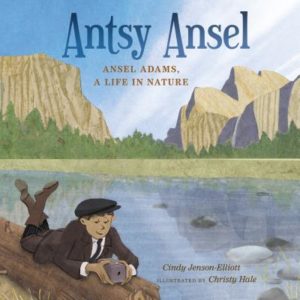 Christy Hale, recent illustrator winner of the Crystal Kite for Antsy Ansel: AnselAdams, a Life in Nature, written by Cindy Jenson-Elliott, gave us a great metaphor for the balancing act. She talked of Craft, Career, and Self as being like three strands of a rope. When you twist them together, they’re made stronger.
Christy Hale, recent illustrator winner of the Crystal Kite for Antsy Ansel: AnselAdams, a Life in Nature, written by Cindy Jenson-Elliott, gave us a great metaphor for the balancing act. She talked of Craft, Career, and Self as being like three strands of a rope. When you twist them together, they’re made stronger.
Kendra Levin, executive editor at Viking Children’s Books and certified life coach, opened the conference with her presentation Be the Hero of Your Writing Process, about applying the Hero’s Journey to the writer’s life.
A story isn’t interesting if there’s no sacrifice, and that applies to writers, too, she said. Writers must protect their writing time, perhaps by giving up stuff, like binge-watching Netflix!
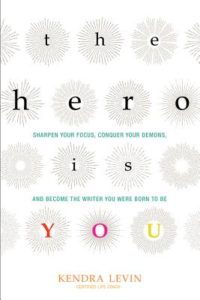
We found Kendra’s challenge to be our own Ally/Mentor/Goddesses compelling. She suggested three ways:
- Pick an area you need/want to learn more about and do that once per week.
- Be a scientist. Study your own process. When you write during the coming month, try something different–a different practice, time, environment, etc. Note what works and what doesn’t.
- Make a commitment to be one another’s allies on this writing and illustrating journey.
And she highly recommended that we create a mission statement for why we create (what do we want our work to accomplish) and a project vision for our specific project (why is it important to us, what do we hope it will contribute to the world, why does this story need telling?).
ACTION: Consider buying Kendra Levin’s book: The Hero is You: Sharpen Your Focus, Conquer Your Demons, and Become the Writer You Were Born To Be.
Linda Camacho, an agent with Gallt and Zacker Literary Agency, fascinated us with her discussion of a rejection experiment that found that when you get rejected, your reaction runs along the same pathways as physical pain. Taking Tylenol may actually reduce the pain of rejection!
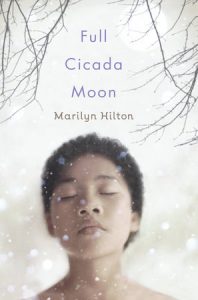
Marilyn Hilton, author of Full Cicada Moon (see our craft review of Full Cicada Moon and our interview with Marilyn) encouraged us not to be afraid to try something completely different when we feel stuck with our writing, to recharge our creative juices. She picked things she “couldn’t fail at,” like tap dancing and travel. Marilyn also introduced us to a wonderful quote: “No man ever steps in the same river twice, for it’s not the same river, and he’s not the same man.”–Heraclitus
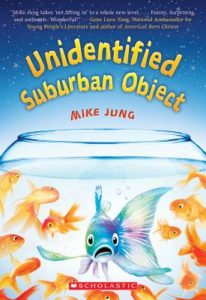 I debated where to put this next highlight, but I think it’s part of the balancing act… part of building community and inclusivity. In the #OwnVoices panel, Mike Jung encouraged us all to buy and read work by diverse creators: “Buy the books and read the books and talk about the books.” It was a lovely panel by lovely people, in which everyone was encouraged to write the stories of their heart, and the panel also did a beautiful job of explaining why it’s critical to our society that we encourage and boost authors and illustrators who share a marginalized identity with their protagonists.
I debated where to put this next highlight, but I think it’s part of the balancing act… part of building community and inclusivity. In the #OwnVoices panel, Mike Jung encouraged us all to buy and read work by diverse creators: “Buy the books and read the books and talk about the books.” It was a lovely panel by lovely people, in which everyone was encouraged to write the stories of their heart, and the panel also did a beautiful job of explaining why it’s critical to our society that we encourage and boost authors and illustrators who share a marginalized identity with their protagonists.
ACTION: Buy a book outside of your cultural experience that’s written by an author who shares the identity of their protagonist. Read it, not because it’s a diverse book, but because it’s a great story!
ON CRAFT
Premise
Fiona Kenshole, partner and senior agent at Transatlantic Agency, reminded us that commercial fiction has to be BIG and in your face!
Sean McCarthy, founder at Sean McCarthy Literary Agency cautioned us to be realistic about where our books will fit. At heart, it’s a little bit of a sales job. Ideally we will have: 1) an arresting commercial hook; 2) an internal emotional core, not just a superficial plot or exciting story line; 3) a main character who undergoes a transformation; 4) a fresh, original concept. (Easy-peasy!)
Character
There were so many fabulous takeaways on character at the conference.
As Sean McCarthy said: “One trend will always be character, character, character.”
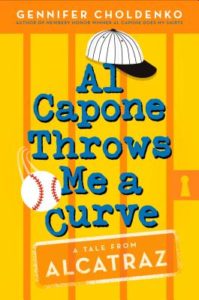 Award-winning author Gennifer Choldenko (Tales from Alcatraz series) presented a master class on character, and she had countless newsworthy insights. Here are some of our favorites:
Award-winning author Gennifer Choldenko (Tales from Alcatraz series) presented a master class on character, and she had countless newsworthy insights. Here are some of our favorites:
- To avoid writing stereotypical characters, describe/write ten of the type and pick the best one. For instance, if you’ve got a class clown character, write ten distinct class clowns before you land on one. That way you’ll know the character is an individual, because he/she is distinct from at least nine other class clowns.
- Characters shouldn’t be the same thing on the outside as they are on the inside.
- When building an antagonist, think about the people who get under your skin. Why do they push your buttons? Pull from life!
- A tip for finding out who your character is: describe a space that’s their own. What’s in their closet?
- How other people treat your character and the choices your character makes are great ways to show (vs. tell) character.
- Your protagonist can only be as fascinating as the forces of antagonism.
- For research, look at childhood photos of yourself. They can reveal a lot about your inner life as a child.
When Sean McCarthy spoke about character transformation, he suggested as an exercise that we put our character in the same scenario the next day. If they’d do the same thing, then they haven’t changed–so do more work! (NOTE: Sean McCarthy’s recommendations for character-driven books: Don’t Let Pigeon Drive the Bus, The Evolution of Calpurnia Tate, and Eleanor and Park.)
Fiona Kenshole told us that our characters need to have strengths they aren’t aware of from the beginning. She also highly recommended that if our character is in the same position at the end of a chapter as at the beginning of the chapter, we delete the chapter.
Plot
Fiona, who presented on powerful plotting recommended that the end (resolution) should pay off the beginning. Also, she tipped us off that we’ve got a plot problem if we leave the plot behind for more than 300 words. And she reminded us that every scene (novel) or page spread (picture book) MUST have a dramatic purpose.
Linda Camacho referenced the cause and effect technique used by South Park creators, Trey Parker & Matt Stone. Alway say “this happened, but then…” or “this happened, therefore…”–never “this happened and then this happened and then this happened…” The latter approach is boring! (See Parker and Stone talk about cause and effect in plotting here.)
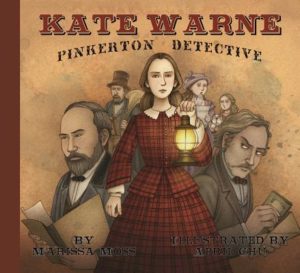 Marissa Moss, Editor, Publisher (Creston Books) and Author, discussed Non-Fiction picture books. She recommended that after you’ve done a ton of research, including eye-witness accounts, photos, letters, etc. Then look for the dramatic moment (the hook) and start there! You need movement and action and an incredibly satisfying ending–it’s the ending that will determine whether children will reread your picture book.
Marissa Moss, Editor, Publisher (Creston Books) and Author, discussed Non-Fiction picture books. She recommended that after you’ve done a ton of research, including eye-witness accounts, photos, letters, etc. Then look for the dramatic moment (the hook) and start there! You need movement and action and an incredibly satisfying ending–it’s the ending that will determine whether children will reread your picture book.
Setting
Mike Jung recommended Daniel José Older’s article Context as Crisis: The Street is a Book to look at how to allow setting to function as conflict/crisis.
Final Thoughts
Gennifer Choldenko reminded us to read our manuscripts out loud as part of our process to develop a strong voice. One piece of advice was to look for applications that will read our manuscripts out loud for us!
In one of our favorite moments, as a parting thought, Gennifer also reminded us that “It is SO important to build your craft!” no matter where you are on your heroic writing journey.
This isn’t a sprint. It’s a marathon. Time to breathe, find our balance, and WRITE!
Special thanks to blog contributors Claire Wrenn Bobrow, Anne-Marie Strohman, JoAnne Stewart Wetzel, Kristi Wright for their insights.
Kristi Wright (co-editor) writes picture books and middle grade novels. Her goal as a writer is to give children a sense of wonder, a hopefulness about humanity, and a belief in their future. She is represented by Kurestin Armada at Root Literary. She is an active volunteer for SCBWI and a 12 X 12 member. Find her at www.kristiwrightauthor.com and on Twitter @KristiWrite.


Thanks for sharing these highlights!